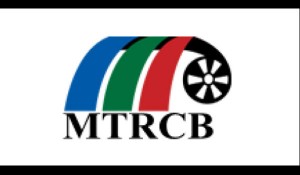The Movie and Television Review and Classification Board (MTRCB) has come up with a revised classification ratings for TV with the aim of encouraging parents to be vigilant with their children’s viewing habits.
The review board added Strong Parental Guidance (SPG) to its three existing classification ratings – General Patronage (GP), Parental Guidance (PG) and Disapproved for Airing on TV (X). However, MTRCB Chair Grace Poe-Llamanzares has deferred the implementation of SPG until an information campaign has been successfully launched.
Llamanzares also announced the creation of the 10-second program advisories that all networks are required to air at the beginning of each program starting October. She said these changes were the result of a series of public consultations with different TV industry stakeholders.
Inquirer Entertainment sought the reaction of some network leaders, as well as a group promoting the rights of children to child-sensitive and family-friendly programs, to the changes now being implemented by the MTRCB. Here’s what they say:
Bong R. Osorio, corporate communications head, ABS-CBN Corp.
“We are calling for an internal consultative meeting on the MTRCB initiatives to consolidate our position. ABS-CBN has regularly attended the meetings called by the censors board to discuss these projects. We will be supportive of its noble and novel projects that will be beneficial to the viewing public that we both would like to serve well.”
Joey Abacan, vice president for program management, GMA Network
“I was in Cannes and was not able to attend the final MTRCB meeting. However, we have always been supportive of its move to safeguard the ‘morality’ in what the public sees on TV. I’d like to believe that this move would help implement that common vision and, at the same time, not hurt any network’s interests. After all, the MTRCB was assigned by the government and the Filipinos, so let’s give (the review board) the chance to fulfill their work first.”
Christine Ona, ombudsman, head of legal division, TV5
“Like the MTRCB, TV5 is committed to the protection and development of children and their interests. As part of self-regulation, it has implemented its ‘Guidelines on the Treatment of Children as Viewers, Subjects, Talents or Participants.’ On top of creating its own Standards Compliance Group and conducting regular seminars and sensitivity training, the network has assigned a child welfare coordinator who oversees all child-related activities. TV5 has also set up a viewer feedback mechanism enabling viewers to e-mail the Ombudsman directly. All these are manifestations of the network’s sincere intention to uphold the highest standards of broadcasting. TV5 reserves its comments on the MTRCB’s SPG classification until the implementing rules are actually issued.”
Edith Del Rosario, assistant general manager, RPN 9
“You know that RPN 9 is now programming ETC through Solar Entertainment. The network welcomes this revised rating scheme. It’s going to make the lives of the people in RPN 9 a lot easier to manage. This will actually help us as we acquire programs abroad. We now have new guidelines as to where we will put our programs. Later on, when we finally have the SPG classification rating, we will know that a particular program with that rating will be for the 10:30 p.m. slot. We are more than willing to cooperate with the MTRCB.”
Mag Cruz Hatol, chair, Anak TV Inc.
“Anak TV is elated that there will be newer, more stringent classification procedures. However, from years of experience, ratings without the benefit of massive grassroots information and media education will not help much. Only the more sophisticated, more educated families, usually in urbanized areas, will heed the warnings and ratings. Sadly, the larger population will continue to ignore the warnings because they are not made to understand the importance of being prudent in using media. Further, they will only look at the warnings the way they regard the station logo because these will be affixed almost permanently onscreen.
“If networks, particularly program buyers, writers, producers and directors can be made to understand the need for classification as essential to child protection, rather than as a cumbersome layer in government oversight; if parents are made to undergo crash information courses (through television, too) about the importance of circumspection and wisdom in using media; if education seriously includes media literacy in the curriculum, then all these efforts at classification will work. It boils down to media education which is what is sorely missing in the landscape.
“After massive media education, a parent will be wiser than to allow children to watch television relentlessly. A parent will be wiser than to keep his child up after nine in the evening, knowing that it is proper bedtime for the kids and knowing that television will be more risqué during that time to pander to adults who can afford to sleep much later. Networks will find it easier to produce, promote and sell more programs that do not need ingredients of sex and aggression in order to recover investment.
“Media education will also convincingly explain to parents that media and government are partners and allies, and not to be expected to raise their children. It will reduce the howling from parents and nags against inanities, sex, commercialism and violence because all these will be properly relegated to after watershed hours, i.e. 9:01 p.m. to 5:59 a.m.
“Television stations will generate more income because in addition to family-friendly programming during the 6 a.m. to 9 p.m. period, they can make more sales during the overnight adult programming period. A child exposed to adult programs after 9 p.m. is now the concern of the family, not the government. The family and the country were amply warned in the same manner of a curfew warning in a state of emergency.”
